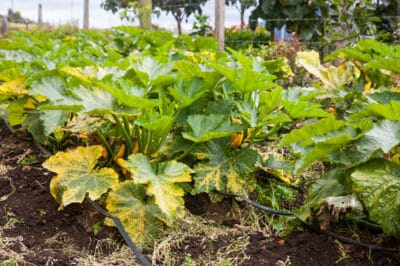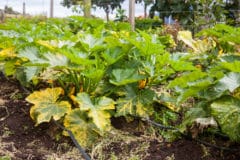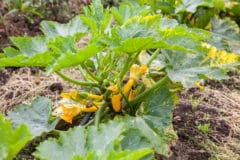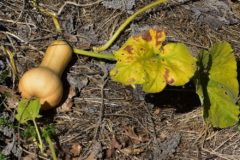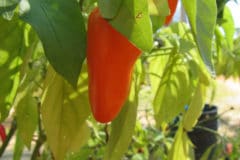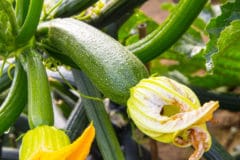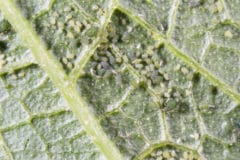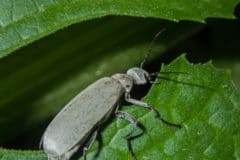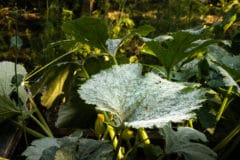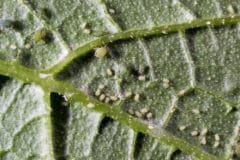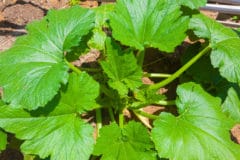Plant Health Checklist
Before delving into what could be wrong, take a moment to assess your plants. Ask yourself the following questions:
- Is the soil soggy or too dry?
- Are the leaves wilting?
- Does the yellowing start at the edges of the leaf, in the middle, or in patches?
- Are there holes in the leaves?
- Are there visible insects or insect eggs on the plant?
- Do large leaves seem to be more affected, or new growth?
The answers to these questions can help you narrow down the cause of yellowing, which can be grouped into three categories: nutrient deficiencies, diseases, and insect infestation.
Nutrient Deficiencies
One common cause of yellowed leaves is poor soil. Because zucchini are heavy feeders, they need lots of nutrients in their soil to draw upon. Soil that is too low in iron, sulfur, or manganese can leave your plants with yellowing leaves, especially in new growth.
Nutrient deficiencies cause other problems for your zucchini plants as well, including blossom end rot. It’s worth the time and effort to prepare your soil by tilling in compost before you start planting. If you want to know specifically which nutrients your soil lacks, contact your local garden center or extension office to find a soil-testing lab.
Diseases
Zucchini plants are susceptible to a number of diseases. When it comes to yellowing leaves, Cucumber Mosaic Virus is a common culprit. This viral disease causes patchy yellowing in the leaves, stunted growth, and misshapen, bitter-tasting fruits. It is commonly spread by aphids, and can survive the winter in the roots of plants.
Unfortunately, there is no cure or treatment for this disease. Your best bet is to treat aphid infestations promptly, and remove any leaves or fruits that appear to be infected.
Insect Infestation
While larger pests chew holes in leaves and cause obvious damage, tiny insects like spider mites and aphids cause more subtle problems. As they attack en masse, they drain nutrients and leave scars which cause leaves to yellow and wither.
The damage these insects cause resembles plant diseases, but there are clues that pests may be to blame. Aphids leave behind a sticky black residue on the leaves, while spider mites weave trails of silk. If you see signs of infestation, treat them quickly; insecticidal soap is effective against both these pests, and largely safe for beneficial insects.
